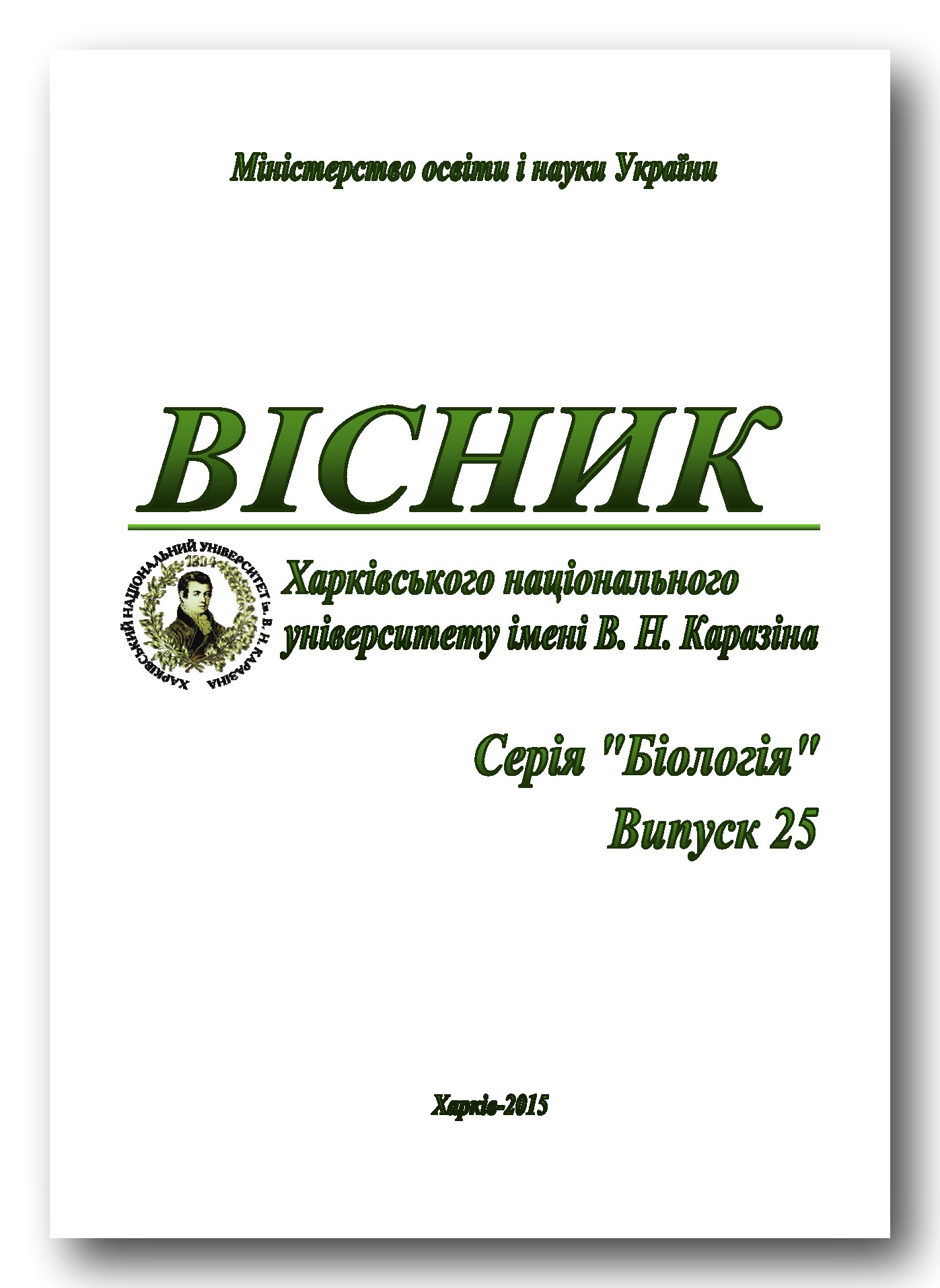The influence of climatic changes on parameters of photoperiodic reaction in the American fall webworm (Hyphantria cunea Drury)
Abstract
In this paper we review available literature and experimental data (2003–2009) on the influence of climate change on photoperiodic reactions of Azerbaijan population of the Hyphantria cunea Drury. It has been revealed, that under new conditions, on one hand, the favorable seasonal period for development is getting longer and, on another hand, rates of growth of some developmental stages increase. All this affects voltinism and promotes transition from bivoltinism to trivoltinism as well as production of additional incomplete generations in transition zones (Baku-Apsheron).
Downloads
References
Кулиева Х.Ф. Сигнализация сроков развития апшеронской популяции американской белой бабочки Hyphantria cunea Drury (Lepidoptera, Arctiidae) // Мат. науч. конф. «Актуальные проблемы в био¬логии ХХI веке». – Баку, 2010. – С. 132–140. /Kuliyeva Kh.F. Signalizatsiya srokov razvitiya apsheronskoy populyatsii amerikanskoy beloy babochki Hyphantria cunea Drury // Mat. nauch. konf. “Aktualnyye problemy v biologii XXI veke”. – Baku, 2010. – S. 132–140./
Кулиева Х.Ф. Фотопериодические особенности летней диапаузы у апшеронской популяции американской белой бабочки Hyphantria cunea Drury // Вестник БГУ. – 2006а. – №3. – С. 64–78. /Kuliyeva Kh.F. Fotoperiodicheskiye osobennosti letney diapauzy u apsheronskoy populyatsii amerikanskoy beloy babochki Hyphantria cunea Drury // Vestnik BGU. - 2006a. – №3. – C. 64–78./
Кулиева Х.Ф. Экологические особенности формирования летней диапаузы у апшеронской по¬пу¬ляции американской белой бабочки Hyphantria cunea Drury // Тр. Ин-та зоологии НАН Азербайджана. – 2006б. – Т.28. – С. 385–396. /Kuliyeva Kh.F. Ekologicheskiye osobennosti formirovaniya letney diapauzy u apsheronskoy populyatsii amerikanskoy beloy babochki Hyphantria cunea Drury // Tr. In-ta zoologii NAN Azerbaydzhana. – 2006b. – T.28. – S. 385–396./
Кулиева Х.Ф. Эколого-физиологические основы прогноза развития вредных насекомых. Прогнозирование развития Noctuidae, Pieridae, Arctiidae, Geometridae в Азербайджане. – LAMBERT Academik Publishing GmbH&Co. KG, 2012. – 155p. /Kuliyeva Kh.F. Ekologo-fiziologicheskiye osnovy prognoza razvitiya vrednykh nasekomykh. Prognozirovaniye razvitiya Noctuidae, Pieridae, Arctiidae, Geometridae v Azerbaydzhane. – LAMBERT Academik Publishing GmbH&Co.KG, 2012. – 155p./
Кулиева Х.Ф., Агамалиев Ф.Г. Соотношение реакций, определяющих диапаузу у апшеронской популяции американской белой бабочки Hyphantria cunea Drury // Вестник БГУ. – 2009. – №4. – С. 70–78. /Kuliyeva Kh.F., Agamaliyev F.G. Sootnosheniye reaktsiy, opredelyayushchikh diapauzu u apsheronskikh populyatsiy amerikanskoy beloy babochki Hyphantria cunea Drury // Vestnik BGU. – 2010. – №4. – S. 70–78./
Мешкова В.Л. Сезонное развитие хвоелистогрызущих насекомых. – Харьков: Планета-принт, 2009. – 396с. /Meshkova V.L. Sezonnoye razvitiye khvoyelistogryzushchikh nasekomykh. – Kharkov: Planeta-print, 2009. – 396s./
Рамсторф Ш., Шельнхубер Х.Й. Глобальное изменение климата: диагноз, прогноз, терапия. – М.: ОГИ, 2009. – 272с. /Ramstorf Sh., Shelnkhuber Kh.Y. Globalnoye izmeneniye klimata: diagnoz, prognoz, terapiya. – M.: OGI, 2009. – 272s./
Соколов Л.В. Климат в жизни растений и животных. – СПб.: ТЕССА, 2010. – 344с. /Sokolov L.V. Klimat v zhizni rasteniy i zhivotnykh. – SPb.: TESSA, 2010. – 344s./
Bradshaw W.E., Holzapfel C.M. Genetic response to rapid climate change: it's seasonal timing that matters // Molecular Ecology. – 2008. – Vol.17. – P. 157–166.
Bradshaw W.E., Holzapfel C.M. Genetic shift in photoperiodic response correlated with global warming // Proceedings of the National Academy of Sciences of the United States of America. – 2001. – Vol.98. – P. 14509–14511.
Gomi T. A mechanism for the decrease in developmental period of a trivoltine population of Hy¬phan¬tria cunea (Lepidoptera: Arctiidae) // Applied Entomology and Zoology. – 1996. – Vol.31. – P. 217–223.
Gomi T., Nagasaka M., Fukuda T., Hagihara H. Shifting of the life cycle and life-history traits of the fall webworm in relation to climate change // Entomologia Experimentalis et Applicata. – 2007. – Vol.125. – P. 179–184.
Houghton J. Global warming. The complete briefing. – Cambridge: Camb¬ridge University Press, 2004. – 382p.
Musolin D.L. Insects in a warmer world: ecological, physiological and life-history responses of true bugs (Heteroptera) to climate change // Global Change Biology. – 2007. – Vol.13. – P. 1565–1585.
Musolin D.L., Saulich A.Kh. Environmental control of voltinism of the stinkbug Graphosoma lineatum L. (Hetero-p¬era: Pentatomidae) in the forest-steppe zone // Entomologia Generalis. – 2001. – Vol.25, no 4. – P. 255–264.
Musolin D.L., Tougou D., Fujisaki K. Too hot to handle? Phenological and life-history responses to simulated climate ch¬an¬ge of the southern green stink bug Nezara viridula (Heteroptera: Pentatomidae) // Global Change Biology. – 2010. – Vol.16. – P. 73–87.
Numata H., Saulich Kh., Volkovich T.A. Photoperiodic responses of the linden bug, Pyrrhocoris apterus, underconditions of constant temperature and under thermoperiodic conditions // Zoological Science. – 1993. – Vol.10, no 3. – P. 521–527.
Parmesan C. Detection of range shifts: General methodological issues and case studies using butterflies // «Fingerprints» of climate change: adapted behaviour and shifting species ranges / G.-R.Walter, C.A.Burga, P.J.Edwards (eds.). – N.Y.: Kluwer Academic, Plenum Publishers, 2001. – P. 57–76.
Shoo L.P., Williams S.E., Hero J.M. Detecting climate change induced range shifts: Where and how should we be looking? // Austral Ecology. – 2006. – Vol.31. – P. 22–29.
Thomas C.D. Climate, climate change and range boundaries // Diversity and Distri¬butions. – 2010. – Vol.16. – P. 488–495.
Yamamura K., Kiritani K. A simple method to estimate the potential increase in the number of generations under global warming in temperate zone // Applied Entomology and Zoology. – 1998. – Vol.33. – P. 289–298.
Authors retain copyright of their work and grant the journal the right of its first publication under the terms of the Creative Commons Attribution License 4.0 International (CC BY 4.0), that allows others to share the work with an acknowledgement of the work's authorship.




